How to Create QR Code for Shopify? (Easy & Free)
In the modern world of E-commerce, it's essential to harness the power of various tools to enhance user experience, boost sales, and maintain a competitive edge. One of such tools is the QR Code, which when integrated into a Shopify website, can open up a plethora of opportunities. Before we dive into the advantages of QR Codes for Shopify, let's understand what Shopify is and the role of QR Codes in the digital marketplace.
Shopify: An Overview
Shopify, a leading Canadian e-commerce platform, is trusted by countless small and independent businesses to host their online stores. It gained substantial prominence during the pandemic, proving crucial to brick-and-mortar retailers transitioning online. Today, it serves as a bustling marketplace for consumers and business owners.
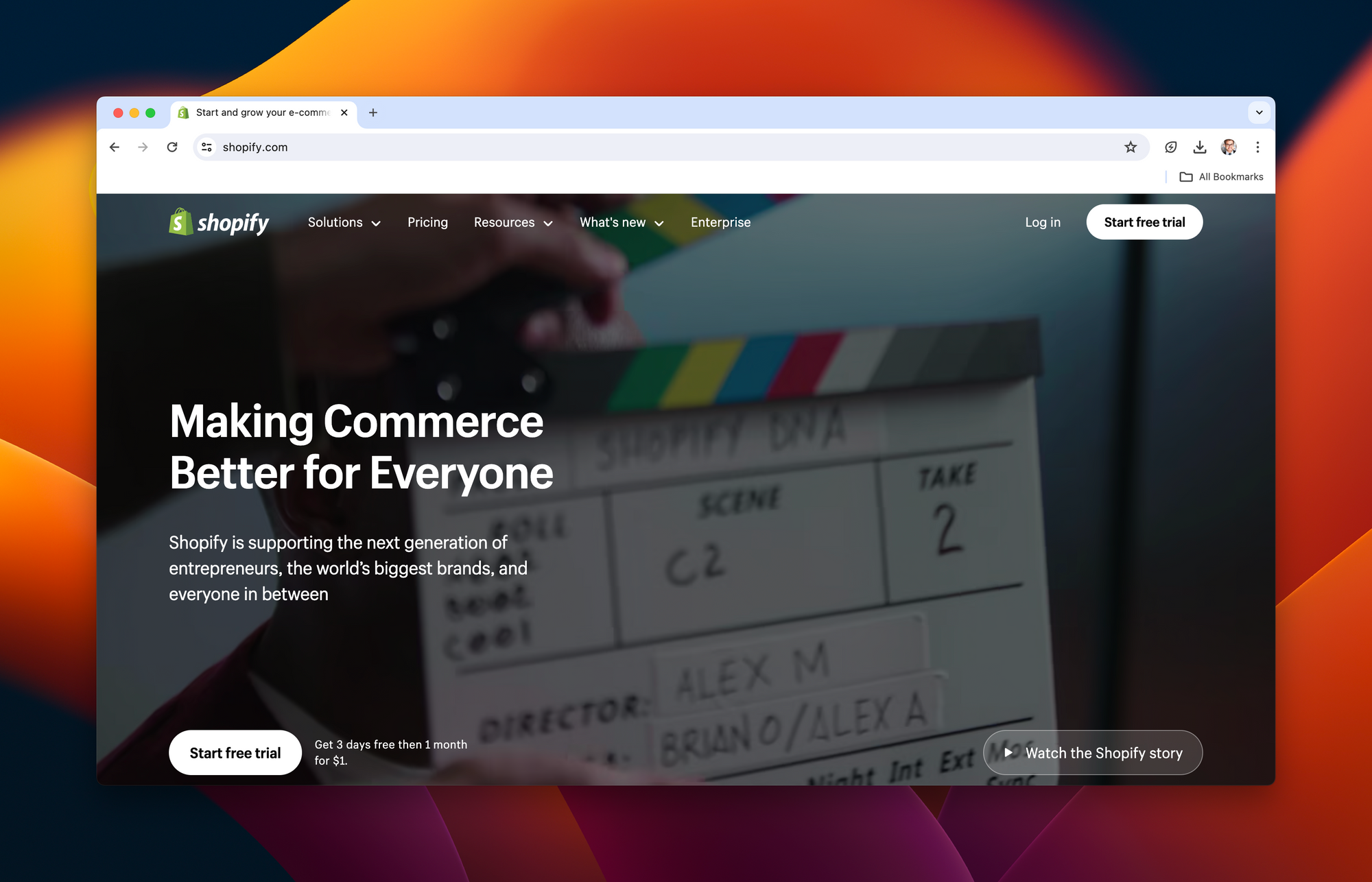
QR Codes: A Brief Introduction
QR (Quick Response) Codes are 2D barcodes that serve as convenient digital shortcuts, connecting the physical and digital worlds. With smartphone readability, they link to a variety of online destinations including websites, contact information, social media platforms, etc. Given their versatility, QR Codes are now extensively in use, carving out a niche in navigation, marketing, and more.
QR Code Integration with Shopify: Why Should You Consider It
As a Shopify store owner, embedding a QR Code directs your customers to quickly access your online store, products, or specific links by simply scanning the code. This not only streamlines your customer's navigation experience but also opens gates for instant purchases, increasing your sales conversions.
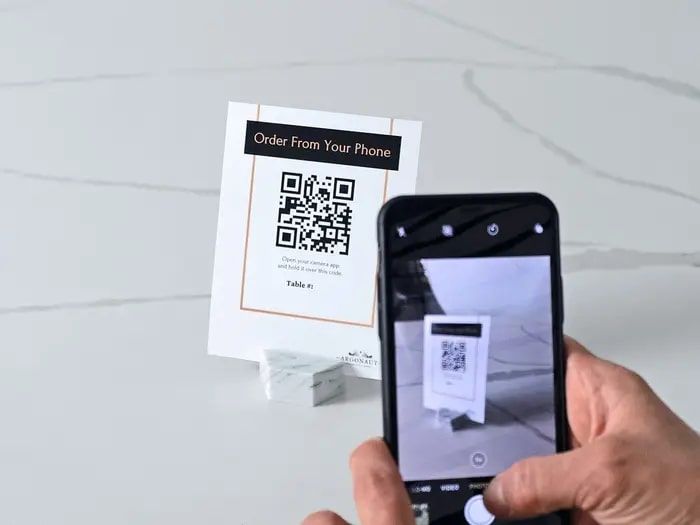
When added to a Shopify store, QR Codes can be both static and dynamic. While static QR Codes, once created, cannot be changed, the dynamic ones are modifiable even post-creation.
Dynamic QR codes are more advantageous for businesses since they offer detailed scan analytics and the flexibility to change the embedded information as necessary.
With this information at hand, let's explore why integrating QR Codes into your Shopify store could be a game-changer for your business.
Step-by-Step Guide for Generating QR Code for Shopify Website
Creating a QR code for your Shopify Website can make sharing even easier. Here is a step-by-step guide on how you can create one:
Step 1: Begin by opening the specific file or folder related to your Shopify Website that you wish to share. Simply copy its URL.
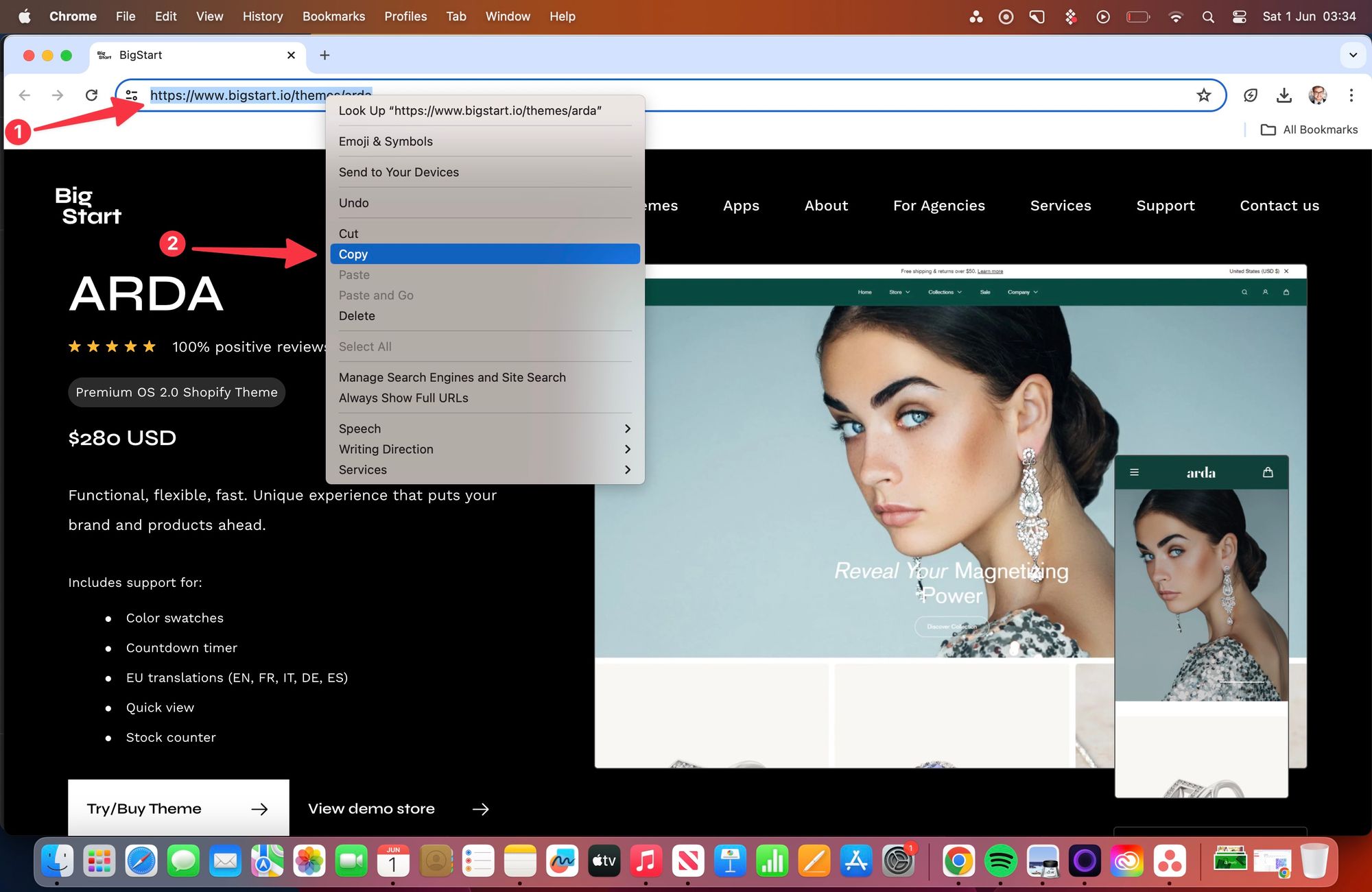
Step 2: Now that you possess the link to your Shopify Website that can be shared, proceed to a QR code generator. In this case, we'll be utilizing qrcode.co.uk. Let's head over to its dashboard.
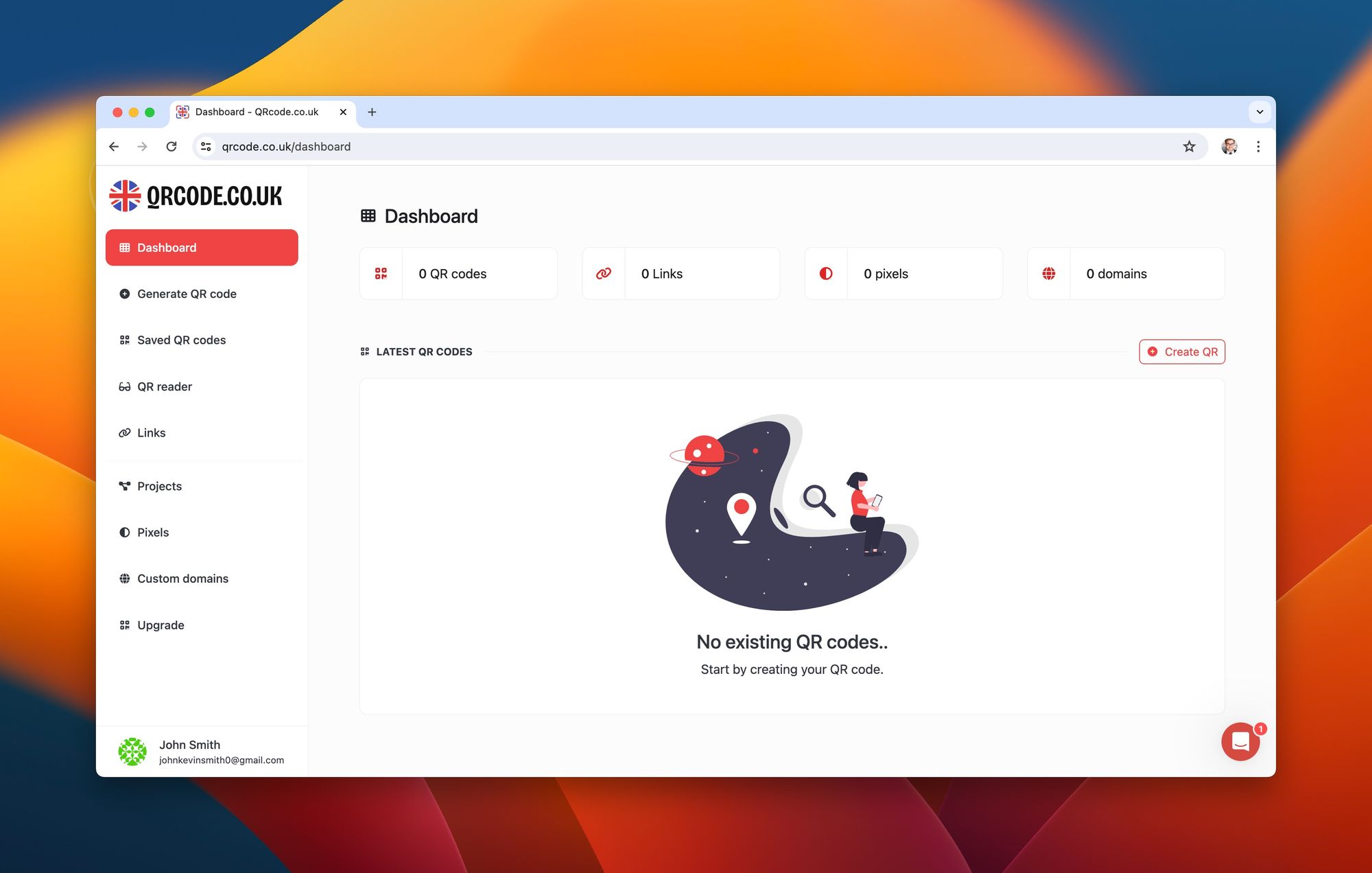
Step 3 - Select the "Dynamic URL" to input your appropriate details: Opt for the Dynamic URL choice and input your Shopify Website Link in the blank field along with any other vital information for access.
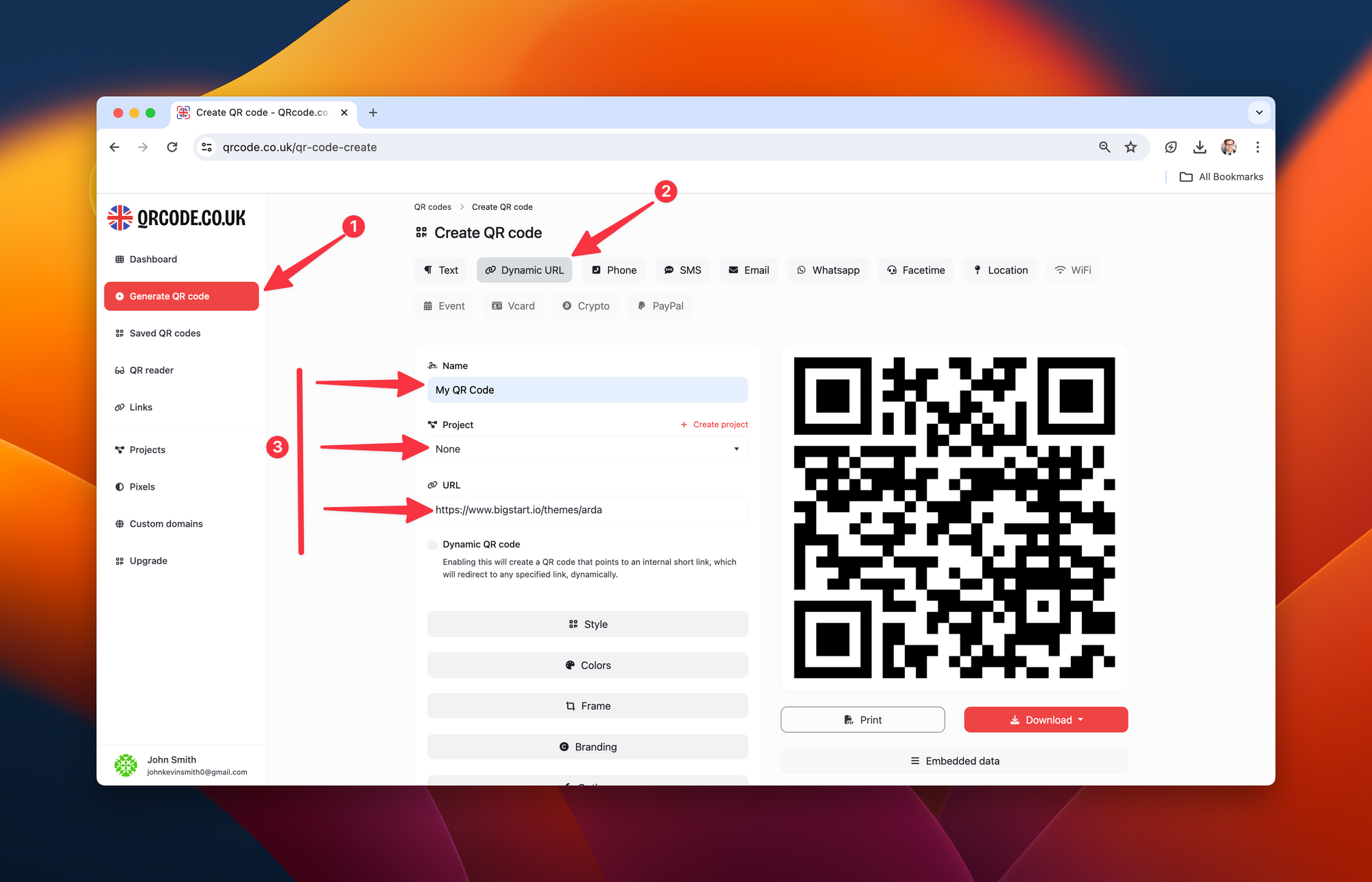
Step 4 - Adjust the code to align with your brand's aesthetic: The Style, Colors, Frame, Branding, and Options can be employed to refine your QR code. Subsequently, hit the 'Create' button and there you go! Your QR code is now established.
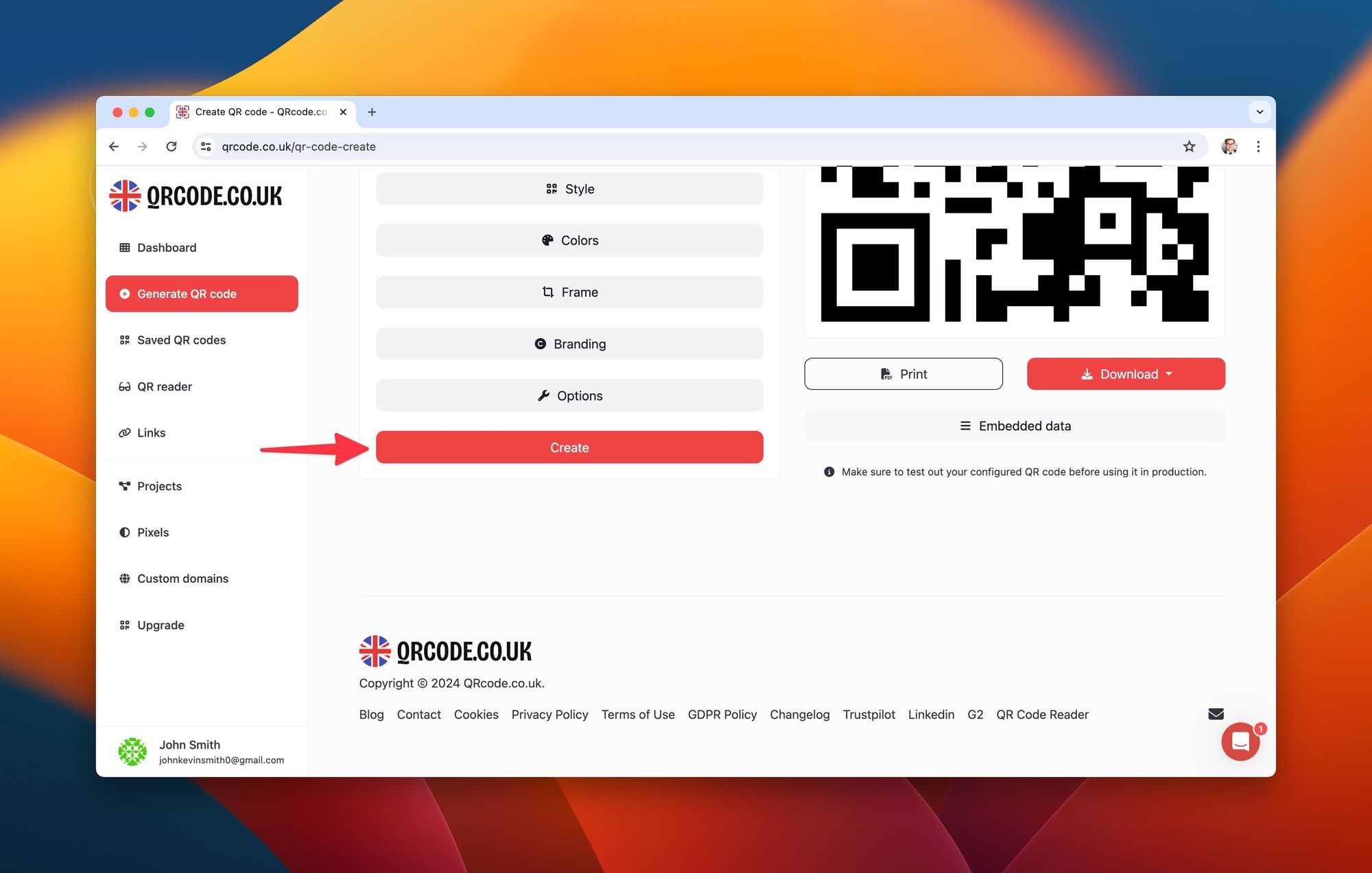
Step 5- Click on the "Download" button and choose the kind of file you wish to share: After you've created and perhaps tailored your QR code, the process of saving and sharing it is fairly simple:
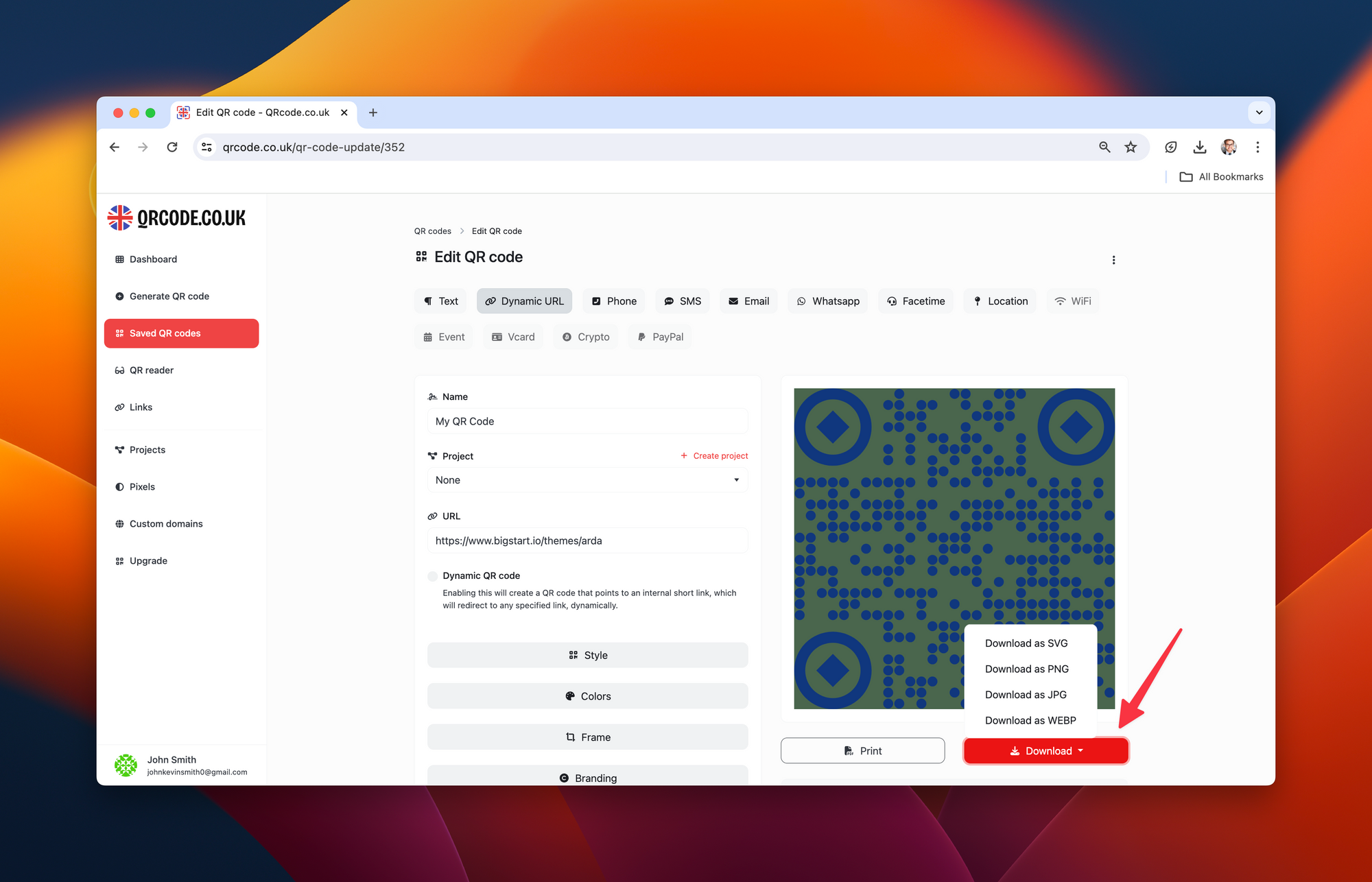
Other QR Code Generators for Shopify
QR Tiger
QR Tiger is another QR Code generator that works efficiently with Shopify. It's user-friendly and offers a lot of mix-and-match customization options to make your QR code unique.
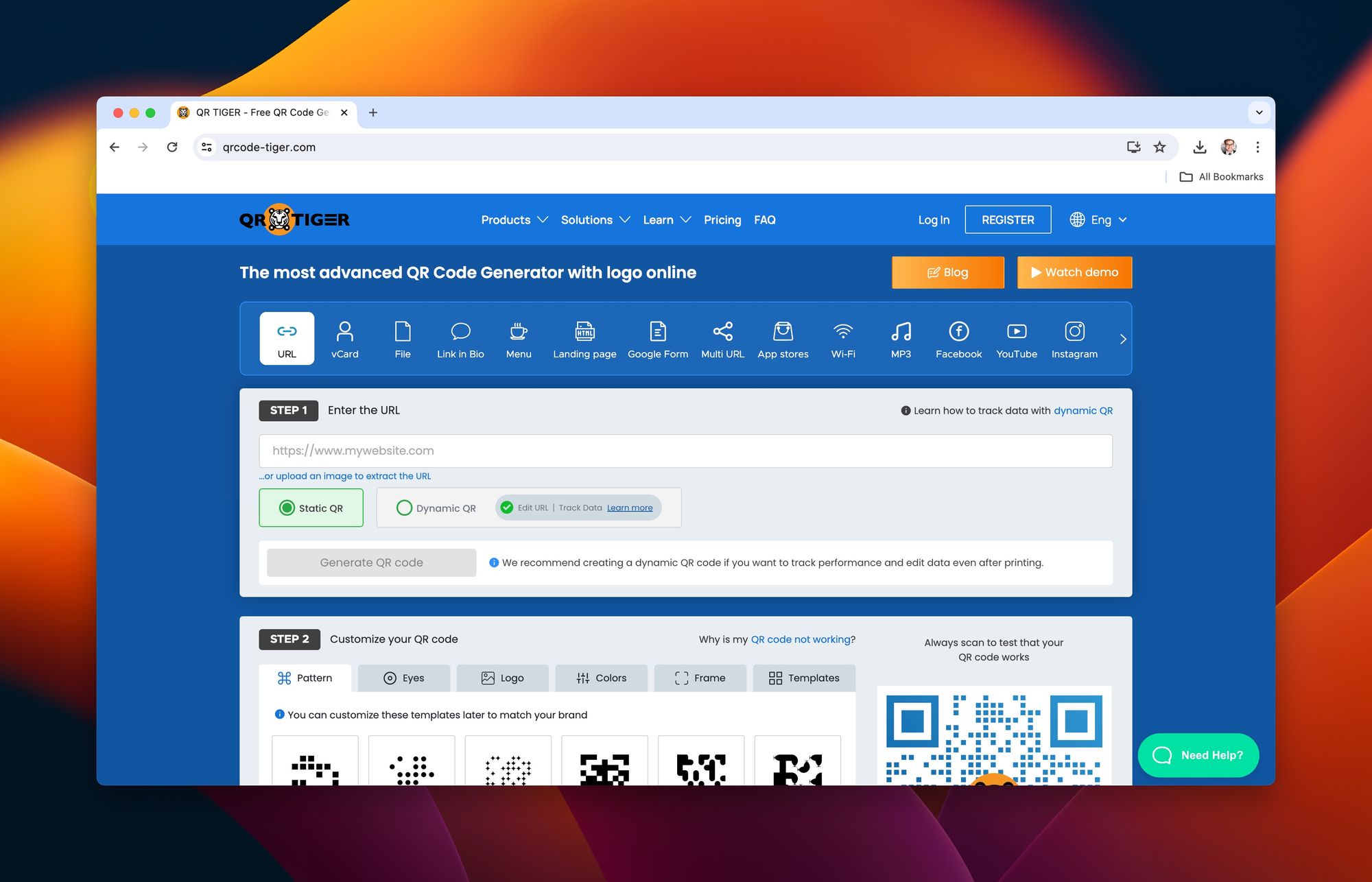
Pros:
- User-friendly interface
- High-level of customization
- Supports a large variety of QR Code types
- Allows editing of the QR Code even after it has been created
Cons:
- Some features are only available in the paid version
Pricing: Free to use, but the paid version starts from $7 per month offering more advanced features such as analytics.
Brij
Brij offers a distinctive feature of creating QR-code mobile experiences. So along with redirecting to URLs, it gives customers a more engaging and interactive journey.
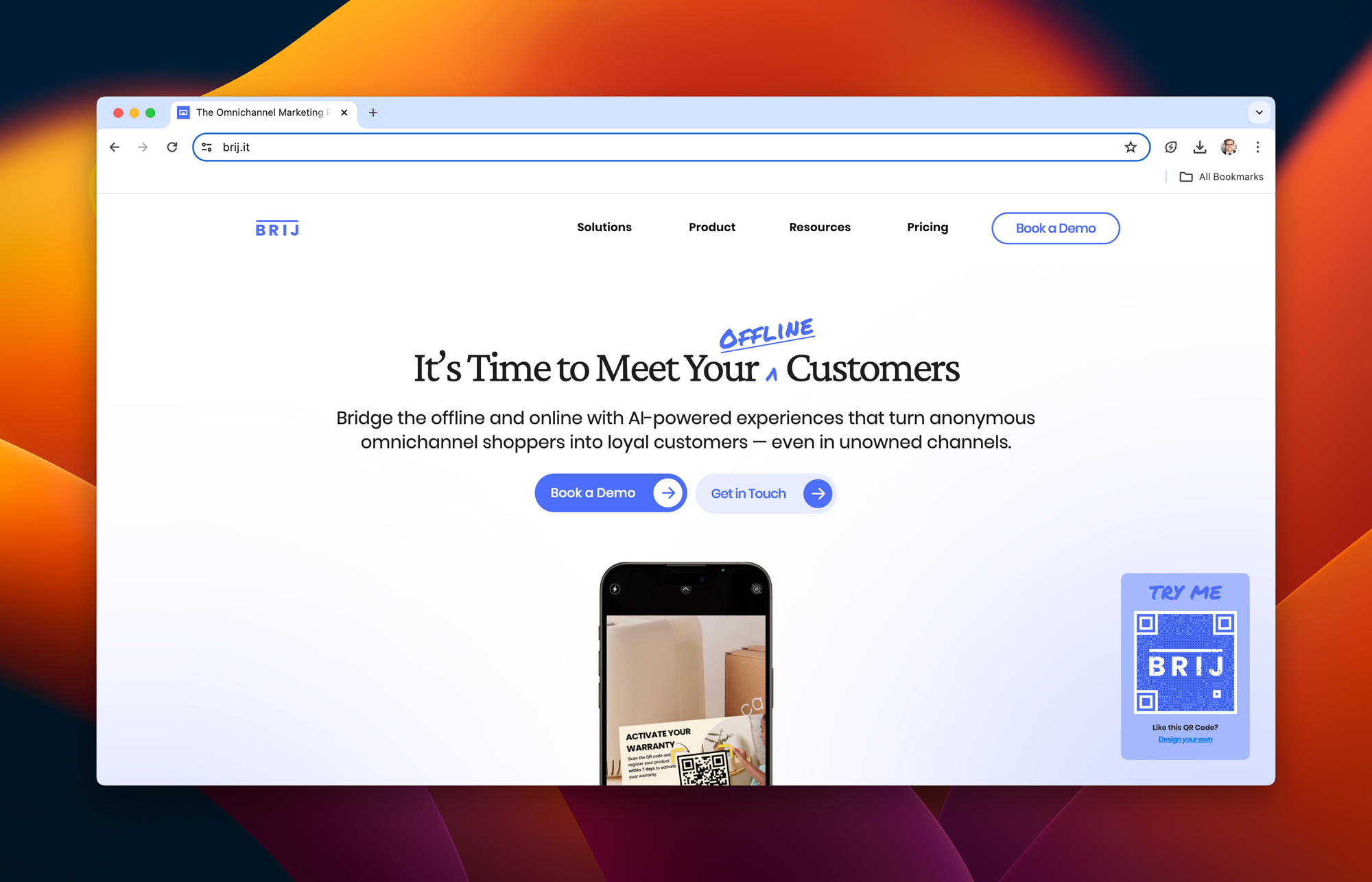
Pros:
- Can create QR-code mobile experiences
- Captures first-party data like email, product registration
- Real-time tracking of QR code engagement
Cons:
- A bit complex to use for beginners.
Pricing: It offers a 14-day free trial. The starter plan is $250 per month.
| QR Code Generator | Pros | Cons | Pricing | Best for |
|---|---|---|---|---|
| QRCode.co.uk | User-friendly, variety of QR code types, high customization, high-resolution QR codes | Some advanced features available only in paid plans | Free, Pro from £29/month | Users looking for a simple yet advanced QR code creation and customization |
| QR Tiger | User-friendly, advanced customization, supports a variety of QR code types, allows QR Code content editing after creation | Some features available only in the paid version | Free, Paid from $7/month | Users who want to utilize a variety of QR code types and require flexibility in editing after creation |
| Brij | Enables QR-code mobile experiences, captures first-party data, provides real-time QR code engagement tracking | Might be complex for beginners | 14-day free trial, starts from $250/month | Users focused on generating mobile applications and tracking QR code engagement in real-time |
Understanding QR Codes for Shopify
Gone are the days when users manually typed URLs to navigate websites. Our digital era is all about speeding things up and making them more convenient, and this is where QR Codes come into play. A QR Code operates as a bridge, linking the physical and digital sides of commerce.
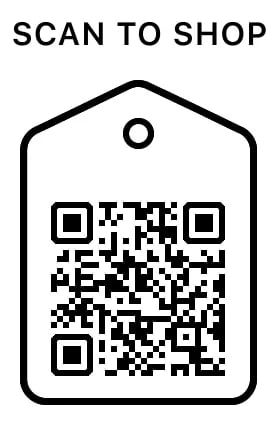
QR codes, short for 'Quick Response' Codes, are two-dimensional barcodes readable by smartphone cameras. Think of them as advanced, modern cousins of typical barcodes. What makes them superior is their ability to store a spectrum of data types, whether it's a website URL, contact details, location coordinates, or just text.
When incorporated into a Shopify store, these QR Codes can direct customers to the store itself, a particular product page, a contact form, or any relevant location. Customers merely need to scan the QR code with their smartphone to be instantly redirected to the requisite page, thus obviating the need to type in any URLs or search terms.
How QR Codes Work in an Ecommerce Setting
In the bustling sphere of online shopping, QR Codes can be game-changers. All that a customer needs is a smartphone with a camera, and they are equipped to scan any QR Code. A user scans the QR Code using their phone, and the phone decodes the encoded information, instantly redirecting the user to the encoded content, like a website, page, form, etc.
For instance, if you've placed a QR Code corresponding to a specific product on a promotional poster, once scanned by a user, he/she would land directly on that particular product's page on your Shopify store. This ensures a smooth, fast, and high-converting shopping experience.
QR Codes Vs Traditional Methods: Advantages & Disadvantages
Advantages of QR Codes
- User Convenience: Instead of entering web addresses manually, customers can simply scan the QR Code and land directly on the required page.
- Versatility: QR Codes facilitate varied applications such as website linking, contact sharing, location sharing, social media engagement, and much more.
- Rich Data Collection: QR Codes provide valuable consumer behavior insight through scan analytics.
- Reduced Printing Costs: QR Codes can be updated, significantly cutting down on re-printing expenses.
- Brand Engagement: They offer innovative ways to engage with customers, like linking to video content or special promotional pages.
- Space-saving: QR Codes can store large amounts of data in a small space.
Disadvantages of QR Codes
- Requires a Smartphone: Not all customers might have smartphones or the necessary QR Code scanning app.
- Internet Dependency: QR Codes need an active internet connection to redirect to web pages.
- Demographic Limitation: Some people, especially those from older generations, might find it confusing and difficult to use.
- Security Concerns: If not used cautiously, users can be directed to malicious websites, which may lead to security issues.
Despite some downsides, given the increasing smartphone usage and the drift towards rapid, easy customer paths, QR Codes offer extensive benefits, especially in the ecommerce sector. They are a cost-effective, scalable, and engaging tool to amplify your Shopify store’s user interaction.
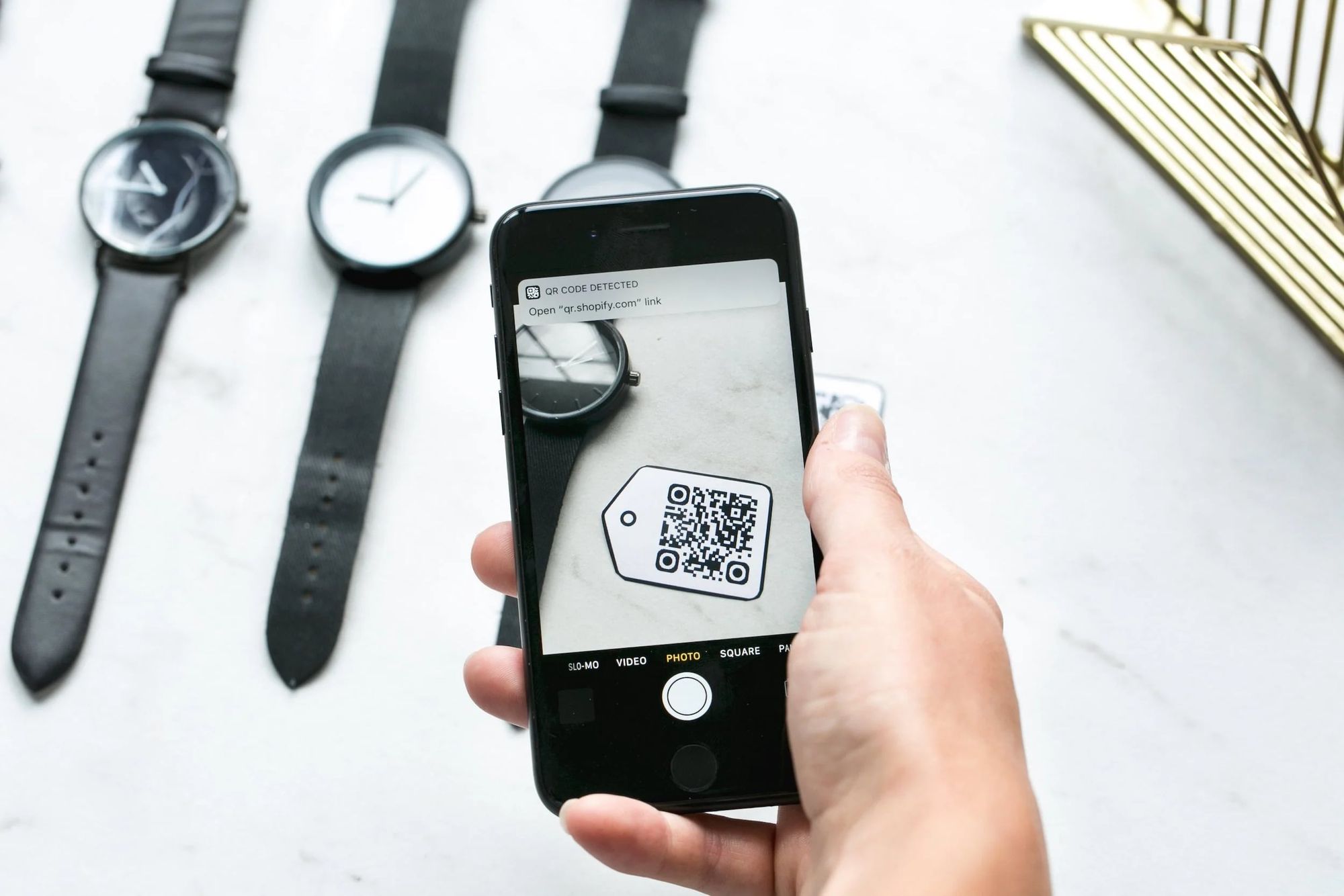
The Power of QR Codes in Enhancing the User Experience
It's no surprise that the utilization of QR codes in ecommerce has been on the rise. As per a report from Statista, QR code-based transactions are expected to surpass $2.7 trillion globally by 2025. But what does QR code usage mean for the user experience in ecommerce, and particularly on Shopify platforms?
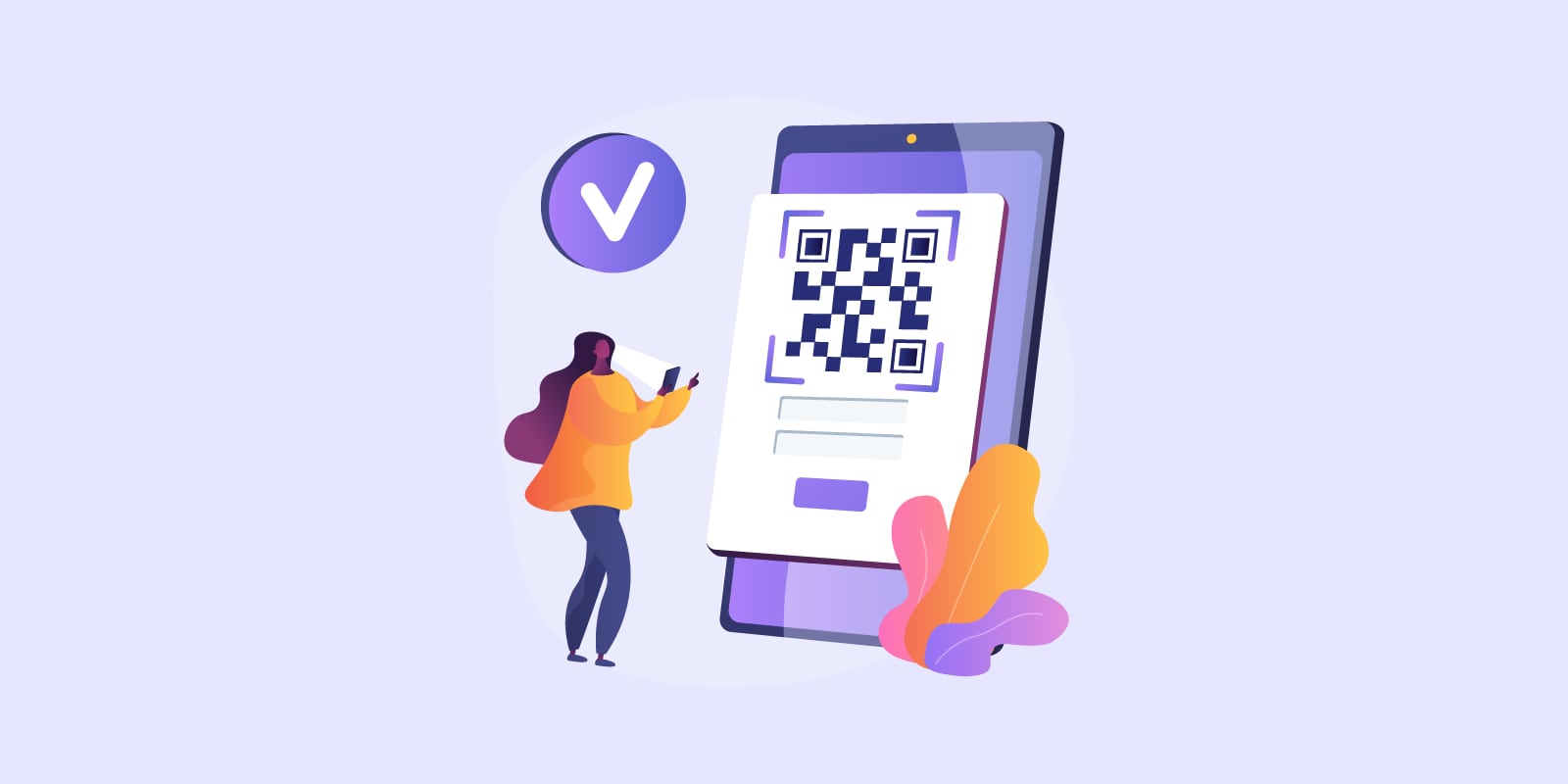
How QR Codes Elevate Shopping Experience
QR codes can streamline and simplify the shopping journey for your customers in several ways:
- User Convenience: With a simple scan, your customers can be directed to their desired page, bypassing the need to type URLs or navigate through the website.
- Product Information: QR codes on product pages can provide customers with additional information about products, making it easier for them to make informed purchases.
- Easy Checkout: QR codes can expedite the checkout process by adding items directly to the cart or prompting instant purchases.
- Promotions and Discounts: QR codes can be used to offer exclusive deals, discounts or unlock special content, enhancing customer engagement and increasing conversion rates.
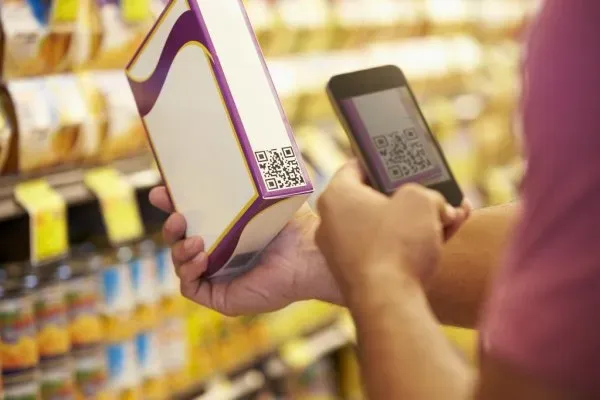
Expanding Your Business Strategy With QR Codes
Incorporating QR codes in your business strategy can bring a multitude of benefits that drive your ecommerce performance to new heights. Aside from enhancing user experience, QR codes can play a pivotal role in your marketing campaigns, customer engagement, and data collection efforts.
Harnessing QR Codes for Multi-faceted Gains on Your Shopify Website
QR Codes can be utilized in a myriad of ways on your Shopify site:
- Product Linking: Direct customers to product-specific pages instantly. It's particularly beneficial for promotional materials where you want to feature specific items.
- Discounts and Special Offers: Encourage customers to make a purchase by offering special deals or discounts when they scan a QR code. This can boost sales and also help in retargeting efforts.
- Review Prompts: Lead customers to review pages to share their experiences with your products, enhancing your credibility and assisting potential customers in their purchasing decisions.
- Social Media Engagement: Link QR codes to your social media profiles, boosting your followers and engagement.
- Customer Support: Improve customer service by connecting QR codes to contact forms or help pages, letting customers reach out to you with ease.

However, the adaptability of QR codes extends far beyond your Shopify store.
QR Codes in Delivering a Multi-channel Shopping Experience
Multi-channel retailing is becoming increasingly relevant in today's digital age, and QR codes are among the leading facilitators. By incorporating QR codes not only on your ecommerce site but also in your physical store, emails, social media, and promotional materials, you can provide your customers with a truly seamless and integrated shopping experience. This omnichannel strategy allows customers to engage with your brand in a manner most convenient to them, ultimately boosting sales and loyalty.
QR codes invite your customers to interact with you digitally, regardless of where they initially engage with your product. Whether it's in-store, from a poster at an event, or via an email, the customer just needs to scan the QR code to be instantly connected to your online Shopify store - the perfect union of offline and online shopping experiences.
The versatility and user-friendly nature of QR codes make them an indispensable tool in any Shopify store owner's arsenal. Their ability to foster multi-channel experiences and enhance customer engagement is unrivalled, making them the perfect accompaniment in a world where ecommerce is king.
Summary from the blog post
The integration of QR Codes into your Shopify store offers numerous advantages including enhanced customer engagement and increased sales. Through their direct product linking, exclusive deals, review prompts, amplified customer support, and fostering of a multi-channel shopping experience, QR Codes truly amplify the user's shopping journey.
Frequently Asked Questions (FAQ)
What is a QR Code?
A QR Code, or Quick Response Code, is a type of barcode that can hold a lot more information than traditional barcodes. This square array of black and white squares can be scanned using a smartphone to reveal the encoded information, which could be a website URL, text, contact details, or more.
How can a QR Code benefit my Shopify store?
QR Codes simplify user navigation on your Shopify store. They can direct users to specific pages or perform specific actions like adding a product to the cart or prompting a discount. This easy, speedy access can lead to increased sales conversions.
How do I create a QR Code for my Shopify website?
You can use online QR Code generators like QRCode.co.uk, QR Tiger, or Brij. You'll need to input the desired destination URL and customize the QR code according to your preference. After testing the QR code to ensure it works, you can download and integrate it into your Shopify website or print materials.
Can I track the usage of my QR Code?
Yes. Many QR Code generators offer advanced analytics with their dynamic QR codes. They enable you to see how many people scanned your QR code, where they scanned it, and when they scanned it, offering valuable insights into your customers' behavior.
Can I change the information in my QR Code after it's been created?
Yes, but only if you've created a dynamic QR Code. Dynamic QR codes allow you to update the encoded information without needing to create a new QR Code. This couldn't be done with static QR codes.

